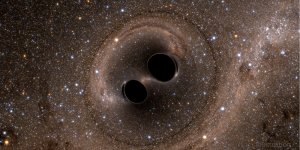| News / Science News |
Scientists Surprised by Relentless Cosmic Cold Front
The researchers used NASA’s Chandra X-ray Observatory to study a cold front located in the Perseus galaxy cluster that extends for about two million light-years, or about 10 billion billion miles.

A gigantic and resilient “cold front” hurtling through the Perseus galaxy cluster has been studied using data from NASA’s Chandra X-ray Observatory. Image credits: NASA/CXC/GSFC/S. Walker, ESA/XMM, ROSAT
Galaxy clusters are the largest and most massive objects in the Universe that are held together by gravity. In between the hundreds or even thousands of galaxies in a cluster, there are vast reservoirs of super-heated gas that glow brightly in X-ray light.
The cold front in the Perseus cluster consists of a relatively dense band of gas with a “cool” temperature of about 30 million degrees moving through lower density hot gas with a temperature of about 80 million degrees.
The enormous cold front studied with Chandra formed about 5 billion years ago and has been traveling at speeds of about 300,000 miles per hour ever since. Surprisingly, the front has remained extremely sharp over the eons, rather than becoming fuzzy or diffuse.
While cold fronts in the Earth's atmosphere are driven by rotation of the planet, those in the atmospheres of galaxy clusters like Perseus are caused by collisions between the cluster and other clusters of galaxies. These collisions typically occur as the gravity of the main cluster pulls the smaller cluster inward towards its central core.
If the smaller cluster makes a close pass by the central core, the gravitational attraction between both structures causes the gas in the core to slosh around like wine swirled in a glass. The sloshing produces a spiral pattern of cold fronts moving outward through the cluster gas.
One of the most surprising aspects of this new research is that the cold front in Perseus remains sharp, even after billions of years. As the cold front travels through the galaxy cluster, it passes through a harsh environment of sound waves and turbulence caused by outbursts from the supermassive black hole at the center of Perseus.
Somehow, in the face of all this bombardment, the cold front edge has survived intact. It seems that magnetic fields have draped themselves over the cold front, acting almost like a shield against the barrage of forces from the rest of the cluster.
The magnetic field along the cold front is equivalent to about one millionth of the strength of a typical refrigerator magnet, and is about ten times higher than in parts of the cluster away from the cold front.
Perseus is the same cluster where astronomers discovered sound waves with a note of B-flat 57 octaves below middle-C plus a giant wave about twice the width of the Milky Way galaxy. (NASA)
YOU MAY ALSO LIKE



